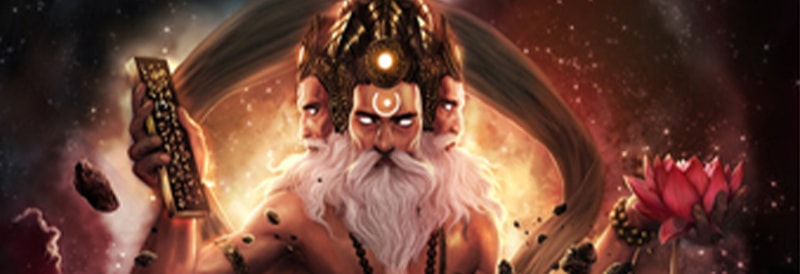Every culture has festivals and celebrations that signify a change - a coming of good luck, a New Year. For the Maharashtrians and Hindu Konkanis in India, Gudi Padwa is all of those things. Everything is expected to be auspicious and new and in the state. People go all out, leaving no stone unturned and no section of the home undecorated. Gudi is an inseparable part of our culture and demands that it be celebrated with gusto.
History

There are a number of legends and stories surrounding the festival of Gudi Padwa. According to the Vedas, which are considered some of the most ancient texts in history, a year is divided into twelve months. ‘Chaitra’ is the first month in this sequence, according to the Hindu calendar (March-April). The first day of this month is said to also be when Lord Brahma created the world after the great deluge, according to the Brahma Purana.
Another legend says the day is auspicious because it is when the Sakas won in battle against the Huns. It is also regarded as the start of the Shalivahan calendar which began soon after the Huns were vanquished by him.
It is also regarded as the first day of spring, which is certainly a day to celebrate. Spring signifies rebirth and hence is considered to be the start of a new year. On the first day of Chaitra, the Sun is perfectly positioned at the point of intersection between the meridians and the equator. This is known as the Vasant intersection, another indication of the commencement of spring and a time for Mother Nature to rejuvenate herself.
How it’s celebrated

The big celebration in Maharashtra is also celebrated in Karnataka and Andhra Pradesh where it’s called Ugadi, while the Sindhi community calls it Cheti Chand. People decorate their homes and temples in all ways. The typical dress for the festivities in Maharashtra is a nine-yard saree called a kashta or nauvari that’s worn by the ladies and a kurta pyjama with a saffron or red turban for the men.
Aside from the interesting outfits, a few key rituals are practised for this special day.
Making rangoli designs

Ladies wake up early in the morning and draw intricate patterns with rangoli powder in front of their homes, in their gardens and courtyards. The addition of diyas and flowers has also made it to the modern rangoli designs to add more vibrancy to the décor.
Flower décor
Much like any other Indian festival, flowers are a major part of the decor for Gudi Padwa as well. They signify purity and a spread of positive energy. If you’re looking for a great way to create some flower decoration of your own, check out our Paper Flower Toran idea in this story. Using Camel Artist Water Colours, you can colour the flowers any way you want to make the Toran more attractive.
The Gudi

A small pot with a large base and small mouth, called a Kalash, is used and covered with an auspicious red, yellow or saffron cloth. This is considered to be a sign of prosperity and good things to come. The pot must be new and made of silver, copper or bronze. The Kalash is then inversely positioned at the entrance of each home and hoisted up. This constitutes the Gudi which must be easily visible even from afar. During the evening of Gudi Padwa, a Lezim (a traditional Maharashtrian folk dance) is performed.
People also tend to decorate the Kalash and this can easily be done with Camel Fabrica Acrylic Colours. You can also choose to add a few beads or mirror pieces to the Gudi for which Camlin White Glue will be most handy.
Wishing all of our dear readers a Happy New Year with prosperous, colourful and creative beginnings!
Leave a comment

Comment added
Comment updated
Comment deleted
More inspiration
“
“Art heals all my feels.”






